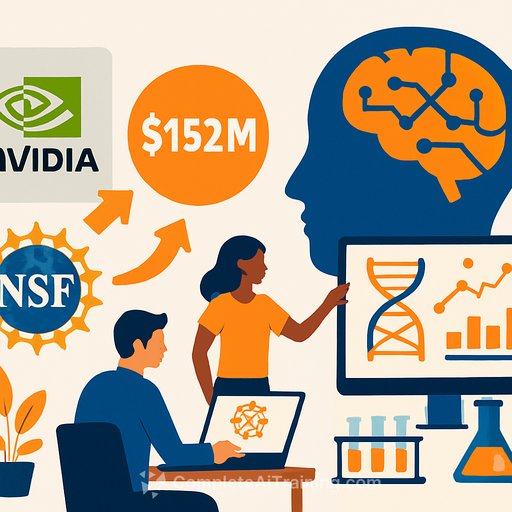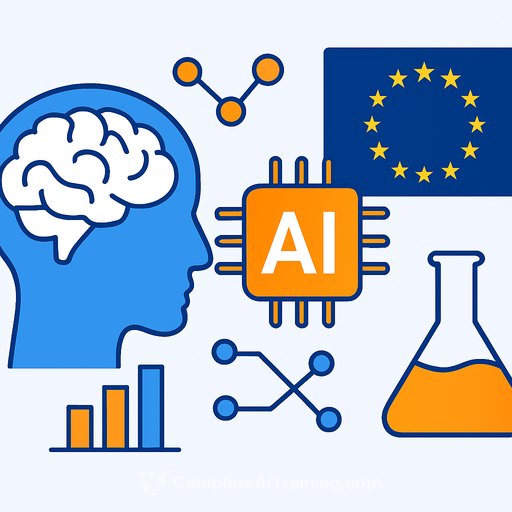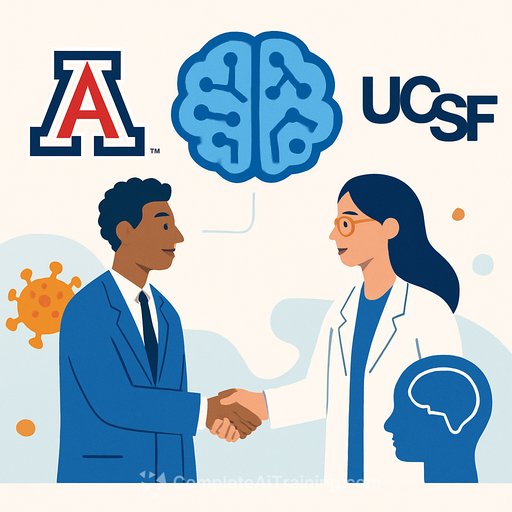NVIDIA and NSF Join Forces to Develop Open AI Models for Scientific Research
The National Science Foundation (NSF) and NVIDIA have committed $152 million to a collaborative project led by the Allen Institute for AI (Ai2). This initiative focuses on creating open-source, multimodal AI models specifically for scientific research. Announced on August 14, 2025, the project aims to equip researchers—from biology to materials science—with transparent and reproducible AI tools.
This effort addresses the high costs and infrastructure gaps that often limit access to advanced AI, while supporting national innovation and accelerating scientific discovery.
Funding and Purpose of the OMAI Initiative
The Open Multimodal AI Infrastructure to Accelerate Science (OMAI) initiative receives $75 million from NSF and $77 million from NVIDIA. Under Ai2’s leadership, the goal is to build an open AI ecosystem featuring domain-specific large language models trained on scientific literature.
These models will help researchers process information faster, generate code and visualizations, and connect new insights with existing knowledge. For example, OMAI models could speed up new materials design, improve climate models, or assist biologists in uncovering protein interactions by integrating text, data, and images.
Infrastructure and Institutional Partnerships
NVIDIA contributes HGX B300 systems powered by Blackwell Ultra GPUs and its AI Enterprise software platform. The project includes collaboration with institutions such as the University of Washington, University of Hawaii at Hilo, University of New Hampshire, and University of New Mexico.
This diverse mix of Tier 1 research universities and regional campuses ensures that advanced AI resources extend beyond elite labs to a broader scientific community.
The Importance of Openness in Scientific AI
Unlike many proprietary AI models, OMAI commits to openly releasing models, training data, code, evaluations, and documentation. This openness supports reproducibility and transparency, which are essential for scientific progress.
The initiative also aligns with the White House AI Action Plan, which promotes open science to enhance U.S. competitiveness and address AI bias and accountability concerns.
Implications for Enterprise IT
This partnership signals a shift in AI infrastructure development—from closed, proprietary systems toward open, collaborative models. Enterprise IT leaders may consider the following:
- Cloud vs. On-Premises: While cloud providers dominate proprietary AI, OMAI’s hardware-based open platform may revive interest in local infrastructure. Organizations will need to balance cost, control, and privacy when choosing between hyperscalers and open-source frameworks.
- Compliance and Governance: Open access to training data and evaluation tools can simplify AI audits and regulatory compliance, particularly in sectors like healthcare and finance.
- Workforce Skills: There could be increased demand for professionals skilled in fine-tuning and maintaining open AI models, shifting focus from vendor-specific certifications to open-source expertise.
Global and Policy Context
The NSF-NVIDIA collaboration carries strategic significance amid global AI competition. China heavily invests in AI through state-led programs, and Europe advances regulation via the EU AI Act. The U.S. aims to lead in innovation and governance by investing in open, national-scale AI resources.
This public-private partnership reflects federal priorities seen in legislation like the CHIPS and Science Act. Notably, OMAI marks NSF’s first major investment in AI software infrastructure, signaling open AI as a growing policy focus.
Challenges and Risks
Open-source scientific AI models face several challenges:
- Data Quality: Scientific literature can include retracted studies and inconsistent metadata, which may bias model outputs.
- Reproducibility: Even with open releases, different labs may struggle to replicate results without standardized training practices.
- Potential Misuse: Open models carry risks of dual-use applications, such as using chemistry AI for harmful material research.
These challenges mirror common concerns in open-source adoption—benefits of transparency must be balanced against security and oversight risks.
Funding Scale Compared to Industry
At $152 million, the NSF-NVIDIA investment is substantial but modest compared to private AI funding. For context, OpenAI has raised over $13 billion from Microsoft, and Anthropic has attracted billions from Amazon and Google.
OMAI’s focus is less about competing directly with hyperscalers and more about providing a public resource that universities, startups, and enterprises can use without locking into proprietary ecosystems.
What This Means for Scientific Communities and Enterprise IT
Broader access to advanced AI tools will accelerate innovation across research institutions, including smaller and under-resourced labs. Reduced infrastructure barriers may encourage enterprise IT to shift investments from proprietary platforms to open-source, collaborative solutions.
Additionally, demand for AI-related skills will grow, encouraging organizations to invest in workforce training and public-private AI infrastructure partnerships.
Looking Ahead
Building on Ai2’s existing model families like OLMo and Molmo, the OMAI initiative has the potential to become a national hub for open scientific AI. This could support both landmark discoveries and routine research tasks.
Success will depend on adoption by researchers, enterprise collaboration, and sustained federal support. For now, it represents a significant step toward making AI an open, reproducible, and collaborative tool for advancing U.S. scientific innovation.
Your membership also unlocks:






